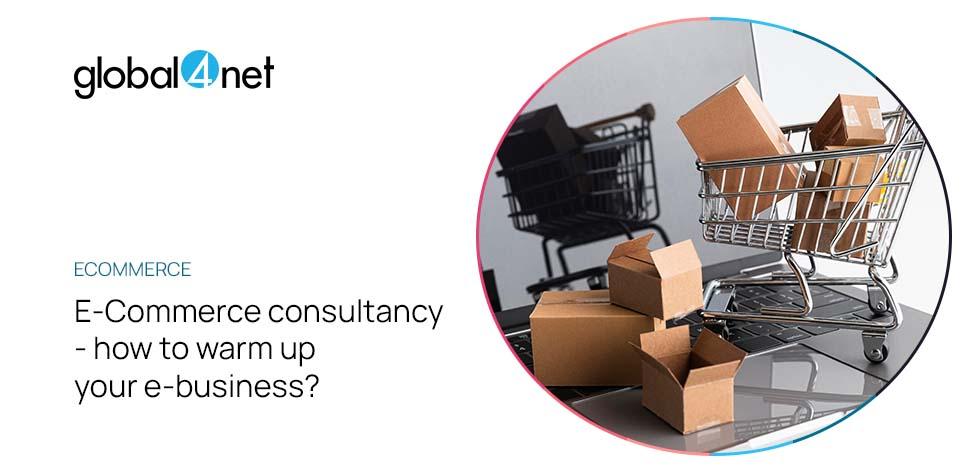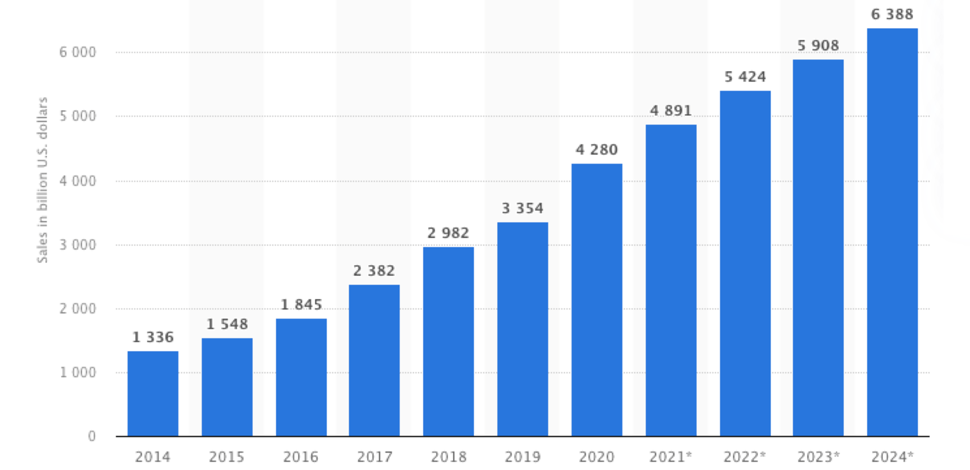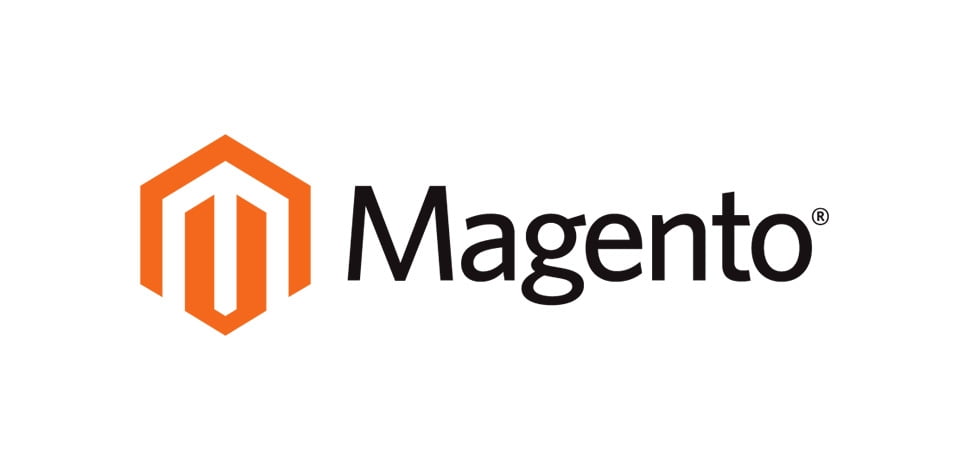E-Commerce consultancy – how to warm up your e-business?

E-Commerce advisory or consulting is an important stop on the way to building your e-business. The share of eCommerce in retail has grown by an unprecedented 5,9% in the last two years. The online marketplace is getting denser and those who have recently joined or are planning to do so, have to spread their elbows to get more customers. It’s no wonder that so many retailers rely on eCommerce consultancy before making key decisions in building a competitive e-business. It is this kind of work that shows how to successfully rock an e-business.
However, before you work with the chosen advisor, it’s worth reviewing the issues surrounding initial decisions when entering the eCommerce market. In this article you will learn:
- what types of e-businesses exist on the market;
- what technologies are needed for eCommerce business;
- why you should work with eCommerce consultants.
E-business and eCommerce consultancy
Among other things, we will tell you how to start planning the foundations of your e-business and on which issues eCommerce consultancy is an integral practice.
Let’s say that you already know what product(s) you want to sell. Probably it will be the same product you were selling before, before digitising your business. But how to start planning your first eCommerce after digital transformation? In an effort to structure the process you’ll need to go through when formulating the foundations of your e-business, we’ve compiled this list:
- Choose the business model (B2B, B2C, C2C etc.), which suits your needs and capital competence.
- Choose an e-business format (online shop, e-auction, e-mall) that will ensure maximum profits for your company and the best conditions for acquiring new customers.
- Define a revenue model appropriate to your logistical capabilities.
- Choose technologies and solutions that will help you manage your new e-Commerce.
It is important to remember that during each of these processes, eCommerce consultancy may prove invaluable. At Global4Net, we have been helping businesses digitise and optimise their eCommerce systems and business strategies for over 10 years in the online edition. Throughout our history, we have assisted over 150 clients and implemented over 200 projects. E-Commerce is our passion and vocation, so we share our knowledge and extensive experience. Especially now, when the eCommerce market is experiencing one of the biggest booms since the beginning of online shopping. Between 2014 and 2020, sales in the eCommerce market have grown steadily, reaching the highest annual growth last year. According to statista.com research, online sales will reach a value of $6.38 trillion (1012) as early as 2024.

So It’s time to introduce the next issues that will help you to kick-start your e-business and establish yourself in the electronic marketplace.
Types of e-business
E-business models can be divided into the type of relationship between the customer and the seller, as well as the way in which profits are generated. As for the first type of division, there are three most important and most common online business models, namely B2B (business-to-business), B2C (business-to-client) and C2C (client-to-client). There are also other categories, but these are less popular with sellers as they are less profitable.
B2B model
The business-to-business model is the most profitable business model, but it also requires the largest financial input. Under this model, the transactions take place between the seller and business clients. It involves orders of higher volume and value. It’s worth remembering that most customers in this segment do not prioritise the quality/price ratio, but focus on the stability and smoothness of order execution. This means that in this model, the attractiveness of your offer will not be as important as in B2C. Instead, the reliability of your delivery system and the speed of the entire purchasing process will increase in importance. You will need a personalised business process strategy to ensure quality shipping and payment guarantees, which is why you should use eCommerce consultancy services.
B2C model
The business-to-customer sector is the largest market in eCommerce. It is within it that most orders take place, but they have a much lower average value than in the B2B sector. In this model, the pricing and promotion strategy for your products or services plays a much bigger role.
C2C model
It can be said that it was only the Internet revolution and the development of eCommerce technology that created the customer-to-customer market. The safety of online shopping additionally encourages consumers to take an active part in this market. It is based on transactions between customers who can play the role of both seller and buyer interchangeably. This is done with the help of eCommerce websites which oversee transactions between users and collect a commission on sales. These entities can also make money by providing special permissions and premium features that allow consumer-sellers to increase their chances of selling products, e.g. by paid promotion of selected goods in search results. Features of the C2C market are low order values and a lack of certainty that a given good will find a buyer.
The most popular types of e-business formats
Once you have chosen the right business models, you need to decide what format you will sell your products and services. When you think of selling online, the first images that might appear in your head are single-brand shops, Allegro, eBay or websites that collect offers from hundreds and thousands of shops, such as Amazon or Empik. These are the most populars models of e-sales and, one could say, the simplest types of eCommerce, as they are only equivalents of their stationary versions. After all, traditional trade also has shops, auctions and shopping malls. However, it is these forms of e-business that account for the majority of revenue in the e-Commerce market. According to a study by The Chamber of Electronic Economy and Gemius, as many as 73% of Polish Internet users decided to shop on the Internet in 2020.
As the above e-business formats attract the most customers, the best tactic is to focus your resources on using one of them.
E-Commerce revenue models
You have the model and the format of your e-business. You already know who you are targeting and through which sales format you will connect with them. Now it would be good to take care of the product back-end, i.e. the inventory management model and the product sourcing model. This is also where an eCommerce consultancy can be a game-changer.
Drop-shipping
Drop-shipping is one of the simplest and least logistically burdensome models of inventory management for retailers. How does it work?
- You connect your eCommerce website with a dropshipping supplier.
- Consumers order products from your shop.
- The order details are sent to the supplier.
- The supplier sends the products directly to the consumer.
The drop-shopping model frees you from the responsibility of managing the products, storing them and handling the delivery system. However, you are still responsible for any shortcomings in delivery or product quality. Consumers will not give a review to a drop-shipping supplier, but will leave their feedback with the shop where they made their purchase – i.e. with you. So you need to make sure that your supplier will be reliable, shipping will be punctual and the quality of the products will not make consumers feel dissatisfied.
With drop-shipping, you won’t always be able to have this assurance, which makes it unsuitable for B2B models where a guarantee of delivery speed and consistent product quality is a key. Due to its fairly small costs, the drop-shipping model is used by small businesses or as a trial version of a shop. However, if your company has the competence and logistical capability, it’s not a good option for your eCommerce. Before deciding on the model you choose, you should use an eCommerce consultancy to assess the above competencies in your company.
Retail and wholesale with own production
This model requires a large contribution of funding, commitment and the construction of an entire infrastructure for the management of goods and supplies. Operation using this model looks as follows:
- The seller orders goods directly from the supplier.
- The supplier sends the products to a warehouse designated by the seller.
- The consumer orders the product on the eshop website.
- Supplier sends the product from the warehouse to the consumer.
If you decide to incorporate this model into your business strategy, you will have many responsibilities. Not only will you have to manage your inventory and products, track and fulfil orders, but also store and protect consumer data and provide storage space.

However, the in-house production model also has several advantages. It is universal in terms of the business model, as it allows you to target sales to both business and individual customers. Another plus is that you have more control over the purchasing process than with drop-shipping. You may have used a warehouse to run your stationary business before digitising your business. In that case, all you need to do is link the system you use to manage your merchandise to the IT architecture of your new online shop.
There’s no doubt that the in-house production model is very suitable for medium to large businesses, but there’s always the option to scale the solution to your needs. If you don’t have a need for an entire warehouse, you can simply rent some of the space.
Private label and on-demand production
If you design your own products and are not interested in investing in your own storage and production system, this system may be for you. The combination of on-demand production and private label works as follows:
- You create the design of your products.
- You place an order for the production of a selected quantity of products.
- Your order is made and then stocked by the contracted manufacturer.
- The consumer orders the product from your shop website.
- The order is processed and dispatched by the supplier from the contracted warehouse.
On-demand manufacturing may be a better option for you than drop-shipping. It offers greater control over your product range and allows you to modify it completely. On the other hand, thanks to the fast-paced nature of the on-demand production method, if there are problems with the quality of the manufactured goods or the speed of delivery, you are able to change manufacturers and distributors quickly and efficiently.
White Labelling
The white labelling model is twinned with that based on own branding and also works best with an on-demand production and storage model. The difference lies in the product design process. White labelling involves outsourcing the design of your branded products to another company.
- You place an order to create or modify a specific product or products. You must specify your requirements so that the company can fulfil your order.
- The order is executed, the goods are produced and stored in your contracted warehouse.
- The consumer places an order in your online shop.
- The supplier sends the order directly to the consumer.
This strategy is based entirely on outsourcing, which makes it suffer from certain shortcomings. While on-demand productions allow a certain amount of freedom and speed when changing manufacturers and suppliers, the situation is different with white label companies. They typically use low quality materials and set a minimum number of products. It is possible that by using this model, you will be forced to order more than their demand. This results in a backlog of products in contracted warehouses. The unsold products take up space that could be used by other goods with higher demand. In such a situation, you will have to decide whether to dispose of the unsold goods you have paid for or continue to pay to store them in the hope that demand for them will increase.
Subscription
Strictly speaking, the subscription model involves generating revenue from periodic payments made by consumers. In return for the payment, the brand agrees to provide selected goods or services. Subscription is one of the safest revenue models. You can combine it with either in-house production or outsourcing models (drop-shipping, on-demand production). It provides a regular and more stable flow of income. It also allows for more effective consumer personalisation. This model is also more efficient in increasing customer loyalty.
Whichever model you choose, it is important that you do not give up on eCommerce consultancy. In the beginning, it is best to bet on professionals with more experience than your own.
What technologies do you need to get into e-Commerce?
Once you have chosen your business and revenue models, it’s time to prepare the necessary IT infrastructure that will allow your e-business to function. Keep in mind that each technology has its strengths but also its limitations. Some of them may interfere with your business strategy. Therefore, it is important to spend enough time on this topic during your e-Commerce consultation. After all, the technology suite you decide to use will determine the potential of the technical (both sales and marketing) activities of your e-business. Without further ado, let’s move on to the most important part of the IT architecture – the e-Commerce platform.
E-Commerce platform
An eCommerce platform is a web-based tool that enables you to sell online. This software allows you to set up and manage the structure and functions of your online shop. It gives you full control over visual, technical and interface changes. The eCommerce platform also enables you to configure sales rules (shopping cart, payment and shipping methods, etc.) to carry out marketing activities. It is also from here that data will be sent to your warehouse and supplier. There are different types of eCommerce platforms and each is adapted to different business solutions.

One of the most popular and versatile is Magento, recently renamed Adobe Commerce. It offers a wide selection of modules providing basic and advanced features to improve the performance of your e-Commerce. Additionally, it has SEO and marketing support tools, making it easier for merchants to influence better positioning of their shops. If you would like to learn more about e-Commerce platforms visit our blog and contact us.
Type of application and website
Another aspect of building your e-business infrastructure is determining the type of application of your online shop. This is a crucial issue, as the performance, accessibility and number of features present in your application are also indicative of the quality of your shop and brand as a whole. Why else should you consult experts when choosing an application for your e-business? Its type also defines the operating systems on which it will run, and thus sets limits on the number of potential customers who will have access to the app. Some of the most popular types of apps are:
- native,
- progressive (PWA),
- cross-platform,
- hybrid.
Native apps run exclusively on a single operating system (Android, iOS, Windows, etc.) and offer relatively the best performance among all types of apps (only cross-platform apps are not inferior). On the other hand, PWA apps work on all kinds of devices and are not limited by operating systems. They are also a Google-backed technology and are less expensive to build.
Cross-platform apps are a solution that combines the advantages of native and PWA apps. By wrapping logic and dual code interpretation, they allow to run on different mobile systems while maintaining high performance and visual quality. Hybrid applications, on the other hand, are a combination of native and web technologies. They are a simple and low-cost solution, but significantly deviate in terms of quality and convenience of maintenance from other types of applications.
Order and product management system (PIM)
PIM (product information management) systems are indispensable when it comes to efficient and fast product data management. They support your e-Commerce platform in a number of functions which are important from the seller’s point of view. Not only do they optimise and to some extent automate the making of changes to product offerings (modifying product descriptions and images, adding new goods, completing attributes, etc.), but they also support the shaping of the shopping experience. PIM systems are the key link between the front-end of your shop and your suppliers. Among other things, the speed and efficiency with which your e-business system dispatches products and takes orders depends on their correct functioning. Two popular software solutions providing PIM solutions are Pimcore and Akeneo.
Hosting
Hosting is the business of renting servers (computers designed to host websites) on which your website is placed. The quality of the servers and hosting service will determine whether your website will be available to users without interruption. Of course, you should want all potential customers to be able to shop on your site at any time of the day or night. However, not only do hosting services determine availability, but also the loading speed of your site, the security of your shop and customer data, as well as the limit of products in your shop, backup and technical support.

As you can see, the basic functioning of your website depends on hosting, and there is no shortage of places where you can easily make a mistake that results in large financial losses. That’s why it’s worth investing in eCommerce consultancy. When it comes to available hosting solutions, the offer is wide: there are free and paid hosting services. Some e-Commerce platforms also have their own server systems available for an additional fee. One of the best and most extensive hosting services is Amazon Web Services (AWS).
Why should you consider e-Commerce consultancy?
E-commerce is a huge market in which success is determined by long-term projects as well as details that change with varying frequency. Every year, the e-commerce market is expanding with new sectors and new customers, whose requirements are also increasing due to the high competition between e-businesses. Over 28 million people in Poland use the Internet. All of them are potential customers you can reach with your products. However, to have a chance to increase your profits you need to draw up a detailed action plan that takes into account potential changes in eCommerce trends, possible implementation delays and the changing needs of your business and your customers. And hundreds of other factors.
Therefore, do not hesitate to contact us. More than 10 years of experience in the eCommerce market, hundreds of clients and projects have allowed us to gain knowledge about digital commerce and digitalization of traditional brands operating in the sales market. E-Commerce consulting will not only help you avoid mistakes and losses during the digital transformation and subsequent implementations for your online shop. We will equip you and your employees with the necessary knowledge and experience, which in eCommerce is the key to recognising good practice and increasing profits. We work with both clients planning digitalisation and companies looking to optimise their sales performance. We streamline technical architecture, develop growth strategies and support our clients in their digital marketing activities. Contact us using the form below and change your eCommerce for the better.








